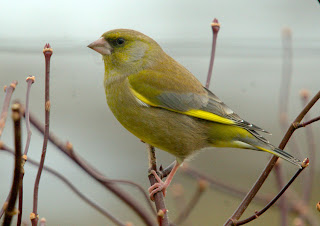Steve Gilliard and Rob Collis provided the expertise, helping us to identify several species by their voices including: blackbird, robin, carrion crow, great tit, blue tit, blackcap, chiffchaff, wren, chaffinch, wood pigeon, collared dove, dunnock, greater spotted woodpecker (drumming), herring gull, lesser black-backed gull, magpie and, just as we finished in the car park, a greenfinch.
Rob is involved in the production of a bird song programme on the BBC called "Tweet of the Day", which is starting on 6th May. A different bird and its song will be featured every morning just before 6.00 am. If you're not up that early you can go to the website, where all 265 broadcasts will be available eventually.
Here's a link to an explanatory article:
You can already sample clips of the cuckoo, the nightingale, the tawny owl and the storm petrel on the website at :
There is also a link to Brett Westwood's birdsong recordings on the home page of this blog.


























